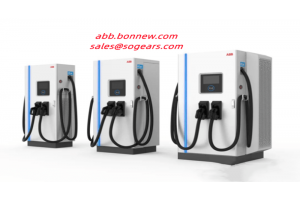
Copper has particularly excellent electrical conductivity, which is why it is widely used in the supply and use of electricity. The application of copper in the motor field is of great significance to improve the energy efficiency of the motor. As a successful case of copper application in the field of high-efficiency motors, cast copper rotor motors have the advantages of high efficiency, low material cost, light weight, small size, and long service life. This article will focus on the role of copper in improving the energy efficiency of electric motors, the main equipment used for electrical energy.

1. The significance of improving the energy efficiency of the motor
As one of the most important power equipment in production and life, the motor plays the role of converting electrical energy into mechanical energy to drive mechanical equipment. According to the statistics of the US Department of Energy, the electricity consumption of electric motors in the United States accounts for 2/3 of the total industrial electricity consumption and 1/2 of the total electricity consumption. Statistics from the European Union show that the total electricity consumption in the EU was 1.7 trillion kWh in that year, of which the motor volume was 719 billion kWh, accounting for 42% of the total electricity consumption. At the same time, my country's current motor power consumption accounts for about 60% of my country's total social power consumption.
It is precisely because motors account for such a large proportion of industrial electricity consumption that improving the energy efficiency of motors is of great significance for promoting energy-saving utilization, protecting the environment and sustainable development. According to EU experts, the electricity consumption of asynchronous motors in the EU industry and tertiary industry will reach 872 billion kWh. If the efficiency of motors with different powers can be increased by 1%-6%, about 3% of electricity can be saved, worth 26%. billion euros (10 cents/kWh).
Likewise, in the United States, the efficiency of electric motors has been improved by only one percentage point, saving approximately 20 billion kWh of electricity worth $1.4 billion per year (7 cents/kWh). In my country, in order to implement the scientific concept of development and realize the coordinated and sustainable development of human and the environment, it is of great significance to improve the energy efficiency of motors. The motor system energy-saving project has been included in the top ten energy-saving projects implemented during China's Eleventh Five-Year Plan period, which fully reflects the importance of motor energy-saving work.
Second, how to effectively improve the efficiency of the motor
In order to improve the energy efficiency of the motor, it is necessary to reduce the motor loss. Taking the most commonly used three-phase AC asynchronous motor as an example, the motor loss mainly includes iron core loss, stator and rotor copper loss, wind friction loss and stray loss, the proportion of total motor loss and The main influencing factors are shown in the table below:

It can be seen from the table that the copper loss of the stator and rotor accounts for a large part of the total loss of the motor, and copper can play an important role in reducing the loss of the stator and rotor of the motor. For the stator winding copper loss PCu1 is mainly the resistance loss at the operating temperature of the stator winding at full load. The formula for calculating the copper loss of the stator winding is as follows:

Stator copper consumption accounts for a large proportion of motor losses. How to reduce stator copper consumption is crucial to improve motor efficiency. To reduce stator copper consumption is to reduce stator resistance R1 and stator current I1. Since the stator resistance R1 = ρL /S, the stator resistance L can be reduced by shortening the coil length, and the wire resistivity ρ can be reduced by increasing the cross section S of each turn of the wire.
Due to the extremely low resistivity of copper, most motors use copper wire to make motor stator windings. For motors using copper windings, increasing the cross-section of the copper wire is a key measure in developing an efficient motor. Compared with traditional motors, some high-efficiency motors pioneered in recent years use 25-100% more copper windings.
Currently, the rotors of most motors are cast aluminum rotors. If cast copper rotors are used instead of cast aluminum rotors, which are widely used in squirrel-cage three-phase asynchronous motors, the total losses of the motor will be significantly reduced, thereby improving the overall efficiency of the motor. Efficient and even ultra-efficient motors can be made using cast copper rotors. With the same motor size, a higher level of motor energy efficiency can be achieved. For example, looking at EEF2 from the EU's energy efficiency standard, it is raised to the higher energy efficiency standard EFF1.
Or, upgrade from EPACT (U.S. Federal Energy Efficiency Regulations) for common induction motors to NEMA (National Electrical Manufacturers Association) Premium Ultra Efficiency Standard. According to the characteristics of the cast copper rotor, the rotor and stator of the motor can be redesigned to maximize the efficiency and achieve higher or even higher efficiency Super Premium ultra-high-efficiency efficiency standards.




